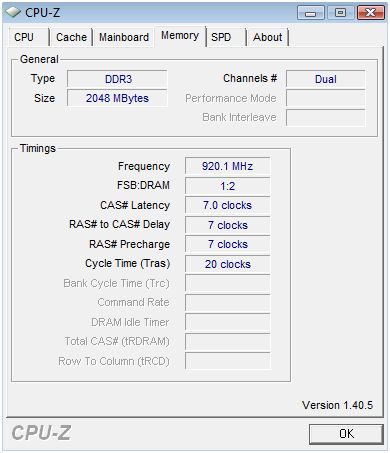 |
| Overclocking Results: |
|
|
The Corsair DOMINATOR Twin3X2048-1800C7D memory was
installed onto the Asus BLITZ EXTREME (Intel P35 Express / DDR3) motherboard for
testing. Before the overclocking began the (1333MHz FSB) Intel Core 2 Duo E6750 processor's clock multiplier was first
lowered from 8x to 6x. Starting at 1333 MHz, the DOMINATOR Twin3X2048-1800C7D
memory clock speed was increased in 20 MHz increments.
 While keeping the
DDR3 voltage steady at 1.5V, it will be interesting to see how long the
Twin3X2048-1800C7D can last before it needs more juice.
While keeping the
DDR3 voltage steady at 1.5V, it will be interesting to see how long the
Twin3X2048-1800C7D can last before it needs more juice.
And that was a short experiment... At 1472 MHz the
memory required a voltage increase to 1.6V to maintain stability. The memory
started to give the system stability problems at 1596 MHz, so voltage was
increased to 1.7V.
At 1732 MHz, the memory got another voltage boost, this
time to 1.8V.
With 1.9V coursing through the veins of the Corsair
DOMINATOR Twin3X2048-1800C7D memory, it was able to reach a maximum speed of
1844 MHz with 7-7-7-20 timings. I know Corsair rates its memory to run at 2.0V,
but raising the voltage to that level did not allow PCSTATS to overclock it any
further. Still, 1844 MHz is a pretty respectable number, and that is smoking fast! DDR2 eat your heart out!

Loosening the memory timings to 8-8-8-24 allowed the
Corsair DOMINATOR Twin3X2048-1800C7D memory to reach just a bit further, as is
often the case when latencies are reduced. The memory rose to 1900 MHz before
finally settling for 1920 MHz. Because the top overclocked speeds with tight and
lax timings were so close, performance with the tighter CAS latency
configuration will obviously yield better results in the benchmarks. That's
where we're headed next!
Prelude to Benchmarks
